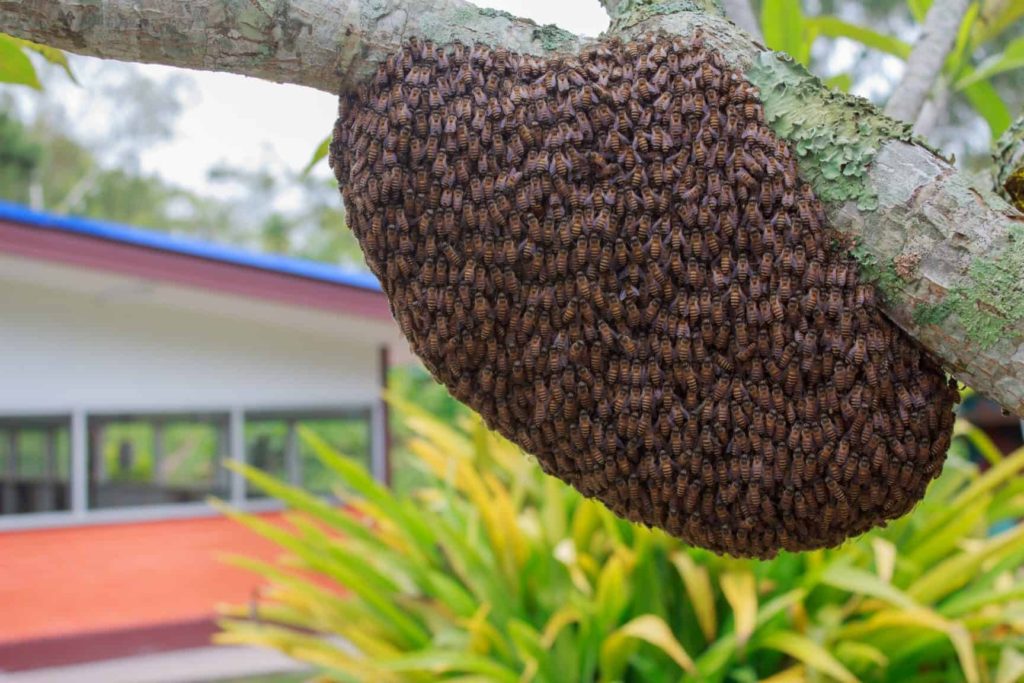There may be no creature on earth more vital to our own well-being than the honeybee — the primary pollinator for fifty different fruit and vegetable crops that make up the most nutritious portion of our daily diet.
Less debatable, however, is whether this same bee is also the ideal model for our ongoing efforts to craft a more perfect union — or at least Shakespeare thought so, when he described honeybees as the “creatures that by a rule in nature teach the act of order to a peopled kingdom.”
But why? And how?

According to the American biologist Thomas Seeley, it’s because of the ways honeybees relate to one another — clearly, constructively, and collaboratively. “The process of evolution operating over millions of years,” he explains, “has shaped the behavior of bees so that they coalesce into a single collective intelligence. Just as a human body functions as a single integrated unit even though it is a multitude of cells, the superorganism of a honeybee colony operates as a single coherent whole even though it is a multitude of bees.”
Although there are many examples of this in honeybee behavior, the most illustrative occurs every year in late spring and early summer, when a beehive is most likely to get overpopulated. When this occurs, roughly one-third of the hive’s bees promptly elect to stay and rear a new queen — who will ultimately be chosen, no holds barred, from the current queen’s few surviving daughters — while the remaining two-thirds politely accept their eviction notices and leave with the old queen to set out into the great unknown and create a new colony.
When they depart, as many as 10,000 honeybees can form a swarm cloud as large as 60 feet across. Yet within minutes, the bees will quickly reassemble somewhere into a beard-shaped cluster, and then hang that way for the next several hours or days, awaiting word, while several hundred of the swarm’s oldest citizens spring into action as nest-site scouts and begin exploring a swath of the surrounding countryside — as large as 30 square miles — for a suitable new home.
This is, to be clear, a life or death decision.
To survive in winter, a hive must be able to contract itself into a tight, well-insulated cluster — about the size of a basketball. They must find a home that is high enough to avoid detection by hungry predators. And they must have space for the copious amounts of provisions — i.e., honey, as much as 44 pounds of it — that will have to sustain them until Spring.
Despite these stakes, the swarm will make this decision within hours, and from as many as 30 different possible nest sites. And they will do all of this democratically, without any central leader. Indeed, despite her name, the Queen Bee is not the boss of anyone, and a honeybee hive is governed collectively — a harmonious society of hexagonal cells wherein thousands of worker bees, “through enlightened self-interest, cooperate to serve a colony’s common good.”
In a swarm, this happens when the nest scouts all set out in different directions in search of the perfect new home. When they think they’ve found one, they return to the group and offer a sort of “waggle dance,” a series of movements that outline the central characteristics of the proposed site, and invite other bees who agree on its merits to join them in waggle-dancing.
This continues as more and more scouts return, and gradually, a face-to-face, consensus-seeking assembly takes place in which an eventual winner is democratically determined. “One way to think of a honeybee colony, then, is as a society of many thousands of individuals,” Seeley explains. “But to understand the distinctive biology of this species of bee, it is often helpful to think of a colony in a slightly different way, not just as thousands of separate bees but also as a single living entity that functions as a unified whole.”
In that sense, the collective decision making of a bee swarm resembles an archetypal New England town meeting, one in which each decision reflects the freely given contributions of several hundred individuals; is informed by multiple sources simultaneously, even ones that are widely scattered; and is made by staging an open competition among the proposed alternatives. “In this way, Seeley continues, “the roughly three pounds of bees in a swarm, just like the three pounds of neurons in a human brain, achieve their collective wisdom by organizing themselves in such a way that even though each individual has limited information and limited intelligence, the group as a whole makes first-rate collective decisions.”
(Y)our move, homo sapiens . . .
Recent Comments